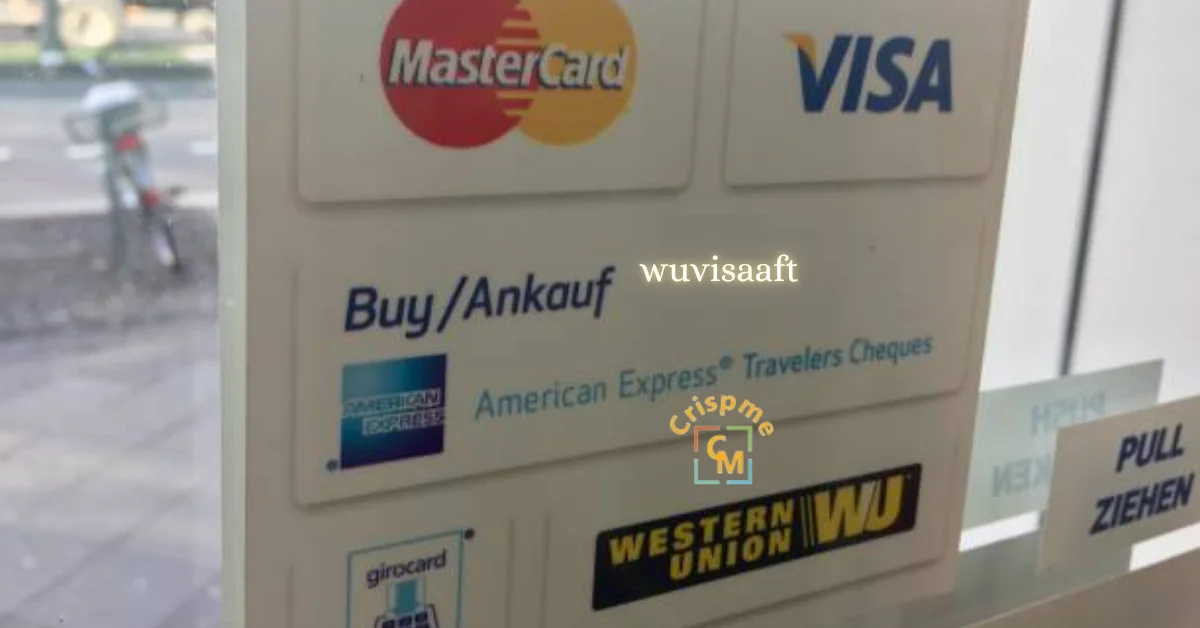BUSINESS
Essential Guidelines for Achieving Financial Literacy
What Is Financial Literacy?
Financial literacy embodies a fundamental understanding of financial principles, covering everything from simple budgeting to complex investment strategies. A financially literate individual is equipped with the skills and knowledge necessary to make informed and effective decisions regarding their financial resources. The significance of financial literacy extends beyond individual benefits. It serves as a cornerstone for broader economic health and is pivotal for the prosperity of entire societies. Organizations like Cane Bay Partners emphasize its critical role in fostering robust economic environments that nurture both personal and communal growth through consultation services and the like.
On a personal level, financial literacy can mitigate risks associated with common financial pitfalls, such as accumulating excessive debt or missing out on investment opportunities due to a lack of understanding. This knowledge empowers individuals, enabling them to navigate complex financial landscapes efficiently, including tackling issues like interest rates, inflation, and credit scores. Increased financial literacy promotes economic resilience because well-informed people are better equipped to manage financial emergencies, which benefits the stability and sustainability of their communities as a whole.
Key Components of Financial Literacy
Budgeting
The foundation of financial management is budgeting. It entails charting out how money should be distributed and drafting a plan that compares anticipated revenue to expenses. Effective budgeting helps individuals understand their spending habits, identify areas for savings, and ensure that they are living within their means. This crucial component of financial literacy instills a sense of control over one’s finances, establishing a foundation for achieving financial goals.
Savings
Savings serve as a vital safety net, often acting as the first line of defense against unforeseen financial setbacks such as emergencies or sudden job loss. Maintaining an emergency fund, ideally comprising three to six months’ worth of expenses, provides the necessary cushion to navigate unexpected financial storms without resorting to debt. Saving consistently, even in small amounts, can build substantial security over time, reinforcing financial independence and confidence.
Investing
Investing is not just for the rich; anyone trying to increase their financial assets should use this crucial tactic. By investing wisely, individuals can leverage their money to generate returns, significantly enhancing their financial future. While investing carries inherent risks, education, and careful planning can mitigate these, opening avenues for considerable long-term financial growth. Diverse investment portfolios, including stocks, bonds, and real estate, allow individuals to tailor strategies based on their financial goals and risk tolerance.
Debt Management
Tackling debt effectively is yet another pillar of financial literacy. Managing debt involves understanding not just how to pay it off but also how to prioritize it. High-interest debts, such as credit cards, should take precedence in repayment plans. Long-term financial savings can be achieved by utilizing tactics like the “avalanche” plan, which emphasizes paying off debts with the highest interest rates first. An informed approach to debt encourages responsible borrowing and fosters healthier financial habits.
Common Obstacles to Financial Literacy
Despite its significance, financial literacy is often hampered by pervasive myths and a lack of resources. Many hold misconceptions, such as the belief that saving and investing are exclusive to individuals with substantial income. These myths can discourage people from pursuing financial education. Furthermore, access to financial education is often unequally distributed, hampering efforts to build financial literacy across diverse socioeconomic groups.
Debunking myths and expanding access to reliable financial resources are crucial steps toward overcoming these challenges. When individuals recognize and challenge their own financial misconceptions, they can make more informed decisions, laying the groundwork for enhanced financial stability.
Why Financial Education Should Start Early
Integrating financial education into early learning can drastically influence future financial behaviors. Early exposure to financial concepts prepares children and teenagers to handle their finances responsibly as adults. Educational initiatives in schools that incorporate financial literacy into their curriculum have proven effective, providing youths with practical financial management skills.
For instance, children who learn to budget their allowance are more likely to manage their money responsibly as they grow. Programs tailored for young students can instill the values and skills necessary for financial well-being, contributing to more financially savvy future generations.
Tools and Resources for Improving Financial Literacy
Various tools and resources are invaluable in the journey toward financial literacy. Financial management apps like Mint and You Need a Budget (YNAB) offer convenient ways to monitor spending and build effective budgets. Additionally, books and online courses provide structured, comprehensive insights into personal finance. For those looking to expand their knowledge, resources such as CNBC’s Personal Finance guide offer valuable advice on utilizing financial tools and apps to their fullest potential.
With easy access to these resources, individuals can practice financial skills, refine their financial strategies, and ultimately improve their overall financial literacy.
The Role of Technology in Financial Learning
Technology revolutionizes how financial education is delivered, providing endless learning opportunities about financial management. Innovative platforms host podcasts and video content that break down complex topics into digestible lessons. These resources allow individuals to learn at their own pace and revisit information as needed.
The advancement of fintech solutions has also democratized financial knowledge, allowing individuals anywhere to access high-quality educational content. By bridging educational gaps with technology, broader segments of the population can benefit from financial learning experiences.
Comparing Financial Literacy Globally
Examining global approaches to financial literacy uncovers varied strategies and outcomes. Countries like Australia and Denmark have successfully integrated financial education into their school systems, resulting in high levels of national financial literacy. These forward-thinking programs can serve as models for other countries striving to improve financial literacy rates among their citizens.
Understanding these successful strategies encourages cross-cultural exchanges of ideas and best practices, furthering the global pursuit of financial literacy. More information on these efforts can be explored through Forbes’ Financial Advisors.
FINANCE
What It Costs a Family When One Person Can’t Work Anymore

When someone in your family can no longer work, the impact is immediate and profound. The loss of income can strain your finances, forcing tough decisions about essentials. You might find yourself cutting back on groceries or postponing bill payments. This stress can also affect relationships and emotional well-being Costs a Family. Medical bills and daily expenses can pile up, intensifying the burden. You may start questioning how to manage without the lost paycheck. It’s critical to understand your options for support. Knowledge can guide you through this challenging time. Cedar Rapids personal injury attorneys can provide insights into possible compensation avenues, helping you regain stability. Remember, you’re not alone. It’s important to consider professional guidance to navigate these difficult waters. Prioritizing your family’s financial security is essential. By exploring available resources, you can begin to build a new path forward. Together, you can face these challenges head-on and find a way through.
Understanding the Financial Impact
When a family loses a source of income, immediate adjustments become necessary. Below is a comparison table highlighting the changes in monthly expenses:
| Expense Type | Before Loss | After Loss |
|---|---|---|
| Groceries | $500 | $400 |
| Utilities | $200 | $180 |
| Medical Bills | $100 | $300 |
| Transportation | $150 | $100 |
Emotional and Relationship Strain
Aside from finances, the emotional toll is significant. Stress from reduced income can lead to tension and conflict within families. Open communication is key. Regular family meetings can help align on priorities and solutions. Seeking support from counselors can also ease emotional burdens.
Seeking Financial Assistance
Several avenues can offer financial relief. Government aid programs may provide temporary assistance. For example, unemployment benefits can help buffer income loss. Applying for food assistance programs can also reduce grocery expenses, easing household burdens.
Legal Support and Compensation
In cases of work-related injuries Costs a Family, contacting legal professionals can uncover potential compensation. Personal injury attorneys specialize in navigating these situations. Their insights can identify compensation you might not be aware of, offering a path to regain financial footing.
Reevaluating Priorities
During this time, it’s helpful to examine and adjust spending habits. Essential expenses must be prioritized over non-essential ones. Creating a revised budget can provide clarity. This practice might reveal areas where you can save more than expected.
Finding New Opportunities
Exploring new work opportunities can be another way to alleviate financial stress. Consider part-time work or freelance opportunities that align with your existing skills. Upskilling through online courses can also lead to new job prospects. Visit CareerOneStop for resources on training and job searches.
Long-Term Planning
While immediate concerns are pressing, don’t neglect future planning. Analyze your financial situation regularly to adjust as needed Costs a Family. Saving plans, even if modest, can build a safety net over time. These efforts ensure you are better prepared for future unforeseen events.
Conclusion
Facing the loss of a family’s income is challenging, but not insurmountable. By understanding impacts, seeking support, and planning carefully, you can navigate this turbulent period. Utilize available resources and professional assistance to rebuild stability. Together, your family can find resilience and adapt to these new circumstances.
BUSINESS
Milyom: The Power of Mindset and Momentum for Growth

Introduction to Milyom and its Philosophy
Welcome to the world of Milyom, where transformation begins with a shift in mindset. Have you ever felt stuck or overwhelmed, unsure of how to break free from your limitations? If so, you’re not alone. Many people struggle with finding their path to personal growth and success. That’s where Milyom comes into play—a philosophy that emphasizes the incredible power of mindset combined with unstoppable momentum.
Milyom encourages individuals to harness their thoughts and beliefs as catalysts for change. It’s about recognizing that our mindset shapes our reality and fuels our journey towards achieving goals we once deemed impossible. But it doesn’t stop there; building momentum is equally crucial in this process. Together, these elements create a dynamic force propelling us toward lasting growth.
Ready to explore how adopting a Milyom perspective can transform your life? Let’s dive deeper into this empowering philosophy!
Understanding the Power of Mindset for Personal Growth
Mindset shapes our perception of the world. It influences how we respond to challenges and opportunities. A growth mindset opens doors. It allows us to see failures as stepping stones rather than roadblocks.
When we embrace this perspective, personal growth becomes a natural part of our journey. Each setback transforms into a lesson learned, fueling motivation for future efforts. Instead of feeling defeated, individuals become resilient thinkers ready to tackle new experiences.
Adopting a positive mindset encourages curiosity and exploration. This attitude fosters creativity and innovation in problem-solving. When you believe in your potential, the possibilities expand significantly.
Milyom emphasizes this transformative power of mindset as essential for self-improvement. It’s about nurturing beliefs that support progress instead of hindering it. By cultivating an empowering inner dialogue, anyone can unlock their true capabilities on the path to success.
The Importance of Momentum in Achieving Goals
Momentum is a critical component in the journey toward achieving goals. It acts as the driving force that propels you forward, transforming aspirations into tangible outcomes. When you build momentum, each small win reinforces your motivation and commitment.
Think of it like riding a bike downhill. Once you begin to move, it’s easier to keep going. The more progress you make, the less effort it takes to maintain speed. This principle applies directly to personal growth and goal achievement.
Creating consistent habits can help establish this momentum. Small actions taken regularly compound over time, leading to significant changes in your life trajectory. Even on tough days, maintaining these habits ensures that you’re still moving ahead—albeit at a slower pace.
Recognizing moments of progress can further fuel this cycle. Celebrate those achievements along the way; they serve as reminders that you’re on track and capable of reaching even greater heights with sustained effort.
How to Develop a Milyom Mindset?
To develop a Milyom mindset, start by embracing self-awareness. Reflect on your thoughts and beliefs. Identify limiting patterns that hold you back.
Next, practice positive affirmations daily. These simple yet powerful statements can reshape your inner dialogue and boost confidence. Speak kindly to yourself; words have immense power.
Define your goals with precision and clarity to guide your path forward. Visualize your goals vividly—see them, feel them, live them in your mind’s eye.
Keep company with people who motivate and encourage your growth. Their energy will help reinforce your new mindset.
Cultivate resilience by viewing challenges as opportunities for growth rather than setbacks. Embrace failures as stepping stones toward success; learn from each experience without losing momentum.
Tips for Maintaining Momentum on Your Journey
Staying motivated can be challenging. To maintain momentum, celebrate small wins regularly. Each step forward deserves recognition.
Create a routine that energizes you. Consistency builds habits, and habits foster progress. Find what works for you—morning rituals or evening reflections.
Connect with others who share your goals. Sharing experiences boosts motivation and provides accountability. Engage in communities or groups that inspire growth.
Visualize your success often. Picture where you want to be and the steps needed to get there. This mental exercise reinforces commitment to your journey.
Don’t forget self-care. Taking breaks refreshes the mind and body, allowing for sustained energy as you push forward toward new milestones on your path of growth through Milyom principles.
Real-Life Success Stories from Milyom Practitioners
Milyom has transformed countless lives, and the stories of its practitioners shine brightly. Take Sarah, for instance. She was stuck in a monotonous job but embraced the Milyom philosophy. With a renewed mindset, she launched her own business within six months.
Then there’s James, who struggled with self-doubt. Through Milyom principles, he learned to shift his perspective and build confidence. Today, he’s a motivational speaker inspiring others.
Maria’s journey is equally motivating. After years of feeling lost in her career path, she focused on maintaining momentum through daily goals set by Milyom strategies. Now she thrives as an author.
Each story reflects resilience and determination fueled by the power of mindset and consistent action—cornerstones of what it means to live by the tenets of Milyom. These individuals are proof that change is possible when you commit to this transformative approach.
Conclusion and Encouragement to Embrace Milyom in Your Life?
Embracing the philosophy of Milyom can be a transformative journey. By adopting a mindset that focuses on growth and potential, you’ll discover new ways to approach challenges. It’s not just about thinking positively; it’s about cultivating resilience and an unwavering belief in your ability to improve.
Momentum plays a key role as you navigate through this process. Small wins build confidence, creating a cycle of achievement that propels you forward. Every action you take, big or small, plays a vital role in your progress.
As you continue down this path, keep the principles of Milyom close to heart. Surround yourself with inspiring stories from others who have walked similar paths—these narratives serve as powerful reminders that change is possible.
Every day presents an opportunity for growth when viewed through the lens of Milyom. Embrace this philosophy wholeheartedly and watch as doors open before you, leading to personal fulfillment and success beyond what you imagined possible. Your journey towards transformation starts now; take that first step today!
FINANCE
WUVISAAFT Explained: Visa & Western Union Transfers

In today’s fast-paced world, sending money across borders has never been easier. But with so many options available, how do you know which one to choose? Enter WUVISAAFT—a revolutionary service that combines the reliability of Visa with the global reach of Western Union. Whether you’re supporting family abroad or making business transactions, understanding WUVISAAFT can make a significant difference in your money transfer experience. Let’s dive into what makes this innovative service stand out in an ever-evolving financial landscape.
What is WUVISAAFT?
WUVISAAFT is an innovative service that merges the strengths of Visa and Western Union. This unique collaboration allows users to send money internationally with ease and efficiency.
At its core, WUVISAAFT streamlines cross-border transactions. It leverages Visa’s extensive payment processing network alongside Western Union’s vast global presence. This means you can transfer funds to nearly any country in the world without hassle.
The platform is designed for both individual consumers and businesses seeking reliable solutions for international payments. Users benefit from a user-friendly interface, making it easy to navigate through various options.
With WUVISAAFT, sending money feels less like a chore and more like an accessible part of everyday life. Whether it’s paying bills or supporting loved ones overseas, this service aims to simplify your financial exchanges across borders.
How does it work?
WUVISAAFT operates by seamlessly connecting Visa card holders with Western Union’s vast transfer network. The process begins when a user opts to send money using their Visa card through the WUVISAAFT platform.
Once initiated, the service processes the transaction quickly and securely. Users enter recipient details and select an amount to send. This information is encrypted for safety.
Next, funds are transferred instantly or within a few hours, depending on the destination country. Recipients can collect cash at local Western Union locations or have it deposited directly into their bank accounts.
Throughout this entire procedure, real-time tracking allows users to monitor their transfers effortlessly. Notifications keep both sender and receiver informed until the money is successfully delivered. The combination of convenience and speed makes WUVISAAFT a popular choice for those needing reliable international transfers.
Benefits of using WUVISAAFT
WUVISAAFT offers a range of advantages that make it an attractive option for those needing seamless financial transactions. One significant benefit is speed. Transfers are typically processed much faster than traditional methods, allowing funds to reach recipients within minutes.
Another key advantage is the convenience factor. Users can initiate transfers from their homes or on-the-go via mobile devices, eliminating the need to visit a bank branch. This flexibility caters to modern lifestyles and busy schedules.
Additionally, WUVISAAFT provides competitive exchange rates and lower fees compared to conventional banking options. This cost-effectiveness can be particularly beneficial for frequent senders or larger transactions.
Customer support also stands out with WUVISAAFT. Users have access to assistance whenever needed, ensuring questions or issues are addressed promptly without unnecessary delays in service delivery.
Comparison to traditional bank transfers
When comparing WUVISAAFT to traditional bank transfers, several differences emerge. Traditional methods often involve lengthy processing times. Transfers can take days, leaving users in uncertainty.
WUVISAAFT stands out with its fast transactions. Funds are typically available within minutes. This immediacy appeals to those needing quick access to money.
Fees also differ significantly. Banks frequently have hidden charges that add up quickly. With WUVISAAFT, clarity is key; you know the costs upfront.
Accessibility plays a role too. Traditional banks may require you to visit a branch or use their specific platforms. WUVISAAFT offers flexibility through various online channels and locations, making it more convenient for many users.
Customer service experiences vary greatly between the two options. Bank support can be slow and automated at times while WUVISAAFT aims for responsive assistance tailored to individual needs.
Safety and security of WUVISAAFT
Safety is a primary concern for anyone sending or receiving money. WUVISAAFT prioritizes the protection of user information and funds.
The platform employs advanced encryption technologies to safeguard transactions. This means your personal data remains confidential throughout the transfer process.
Additionally, both Visa and Western Union have established reputations for security in financial services. Their combined expertise enhances trust in WUVISAAFT.
Fraud monitoring systems are active 24/7, detecting suspicious activities almost instantly. Users can report any concerns directly through customer support channels that are readily available.
With these robust measures, clients can feel confident using WUVISAAFT for their financial needs without compromising safety.
How to use WUVISAAFT
Using WUVISAAFT is straightforward and efficient. First, ensure you have an active Visa card linked to your Western Union account.
Start by logging into your Western Union profile. Navigate to the money transfer section, where you’ll find options tailored for various payment methods.
Select the WUVISAAFT option. Enter the recipient’s details accurately. This includes their name, location, and any other required information.
Next, input the amount you wish to send. Review all entered details carefully before proceeding with the transaction.
After confirming everything looks good, complete your payment using your Visa card. You’ll receive a confirmation message along with tracking information for peace of mind.
Keep this tracking number handy; it allows you to monitor the status of your transfer in real time as it reaches its destination efficiently.
Conclusion
WUVISAAFT simplifies the complexities of money transfers and visa payments. With its unique integration between Visa and Western Union, this service offers a streamlined way to send funds securely across borders.
The convenience of WUVISAAFT allows users to enjoy faster transactions compared to traditional banking methods. Plus, the added benefits like lower fees and accessibility make it an attractive choice for anyone looking to transfer money internationally.
As you explore your options for international money transfers, consider how WUVISAAFT can serve your needs effectively while prioritizing safety and security. Whether you’re sending remittances or making payments abroad, this innovative solution opens doors for seamless financial interactions globally. For those who value efficiency in their monetary dealings, WUVISAAFT stands as a compelling option worth considering.

 BUSINESS10 months ago
BUSINESS10 months agoBrand Visibility with Imprint Now and Custom Poly Mailers

 TECHNOLOGY8 months ago
TECHNOLOGY8 months agoDizipal 608: The Tech Revolution Redefined

 HEALTH9 months ago
HEALTH9 months agoHappy Hippo Kratom Reviews: Read Before You Buy!

 HOME IMPROVEMENT9 months ago
HOME IMPROVEMENT9 months agoThe Do’s and Don’ts of Renting Rubbish Bins for Your Next Renovation

 BUSINESS10 months ago
BUSINESS10 months agoExploring the Benefits of Commercial Printing

 HEALTH5 months ago
HEALTH5 months agoYour Guide to Shedding Pounds in the Digital Age

 LIFESTYLE10 months ago
LIFESTYLE10 months agoThe Disciplinary Wives Club: Spanking for Love, Not Punishment

 ENTERTAINMENT2 months ago
ENTERTAINMENT2 months agoExploring the Kristen Archives: A Treasure Trove of Erotica and More












